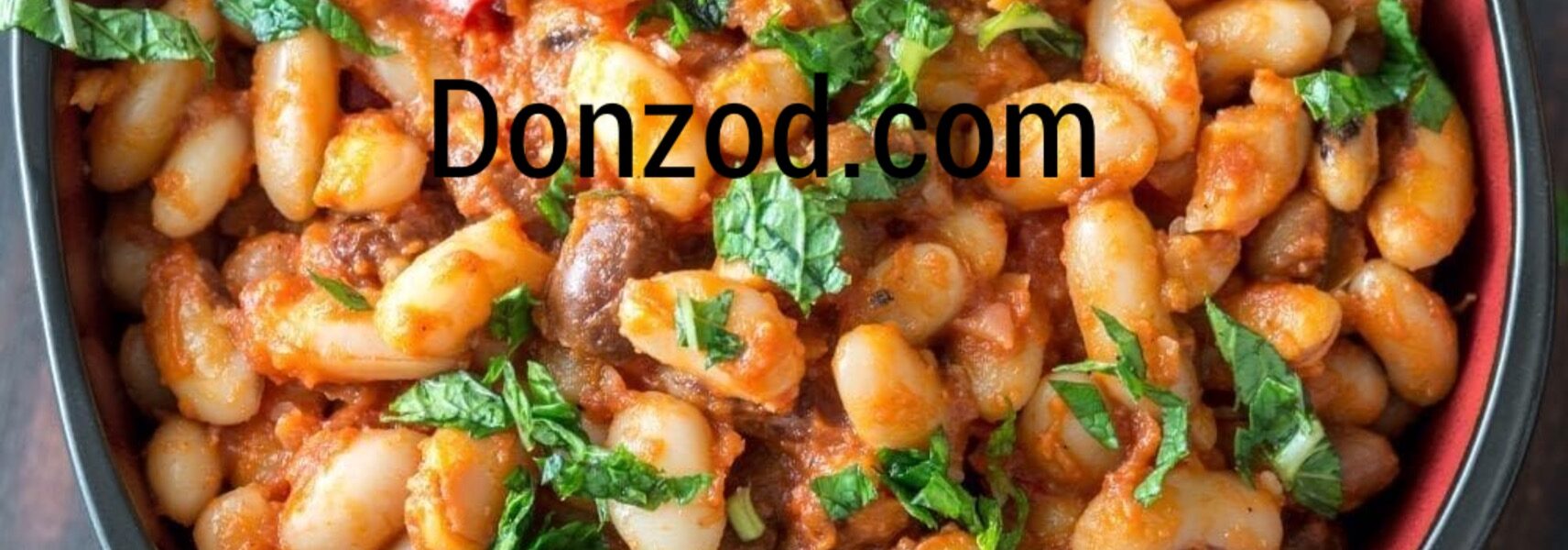Pinto Beans has a delicious aroma. It is the kind of aroma that pulls you back to your childhood, reminding you of weekend afternoons spent around the family table.
While pinto beans may seem like an everyday dish, making them from scratch has a certain charm that canned beans simply cannot replicate.
However, it is not just about following a recipe it is about understanding the little details that transform a simple pot of beans into a memorable meal.
In this blog post, I will be walking you through a detailed, step-by-step guide on how to make homemade pinto beans that are full of flavor, texture, and warmth.
If you have ever been intimidated by dried beans, I promise by the end of this article, you will feel confident enough to prepare them on your own.
A Little Story Behind Pinto Beans
Before diving into the actual recipe, allow me a moment to share why I love cooking pinto beans. Growing up in a small town, our family didn’t have a lot of elaborate meals.
But my mother always said that with a bag of beans and some basic spices, you could feed a household and still have leftovers for days.
Pinto beans were affordable, filling, and versatile. Whether served as a side dish, wrapped inside a tortilla, or even eaten alone with cornbread, they found their way onto our plates at least once a week.
I should also mention that the first time I tried making them on my own, I completely forgot to soak the beans overnight.
The result was a pot of stubborn, undercooked beans that no amount of seasoning could fix. Hopefully, you won’t make the same mistake.
Ingredients for Making Pinto Beans
Let us begin with the ingredients. One of the joys of making pinto beans is that you do not need fancy items. Most of these you probably already have sitting in your pantry.
- 2 cups of dried pinto beans
- 1 medium yellow onion, chopped
- 3 cloves of garlic, minced
- 1 teaspoon of ground cumin
- 1 teaspoon of smoked paprika
- 1 bay leaf, 6 cups of water or low-sodium vegetable broth (for added flavor)
- 1 tablespoon of olive oil, Salt
- To taste (typically around 1–2 teaspoons),
- Freshly ground black pepper, to taste.
Some people also like adding diced tomatoes or jalapeños, but for today’s recipe, we are keeping it classic and straightforward.
Preparing the Beans
One of the most debated steps in cooking dried beans is whether or not to soak them. Some cooks argue that soaking shortens cooking time and makes the beans easier to digest, while others skip it altogether, claiming it is unnecessary.
If you remember ahead of time, soaking the beans overnight in cold water is a great idea. Just rinse the beans thoroughly, place them in a large bowl, cover them with plenty of water, and let them sit for 8–12 hours.
However, if you’re short on time or, like me, forgetful on occasion, you can use the quick soak method. Place the rinsed beans in a pot, cover them with water, bring to a boil, then turn off the heat and let them sit covered for about an hour.
Drain and rinse before cooking. Whichever method you choose, make sure to pick through the beans first to remove any small stones or debris. You’d be surprised what you find sometimes.
The Cooking Process
- Sauté the Aromatics: In a large pot or Dutch oven, heat the olive oil over medium heat. Add the chopped onion and cook for about 5–7 minutes, until softened and translucent. Stir occasionally to prevent sticking. Then add the minced garlic, cumin, and smoked paprika. Cook for another 1–2 minutes, stirring constantly so the garlic doesn’t burn.
- Add the Beans: Drain and rinse your soaked beans (whether overnight or quick-soaked). Add them to the pot along with the bay leaf.
- Pour in the Liquid: Cover the beans with 6 cups of water or broth. If you’re using a ham hock or bacon, this is the time to add it. Bring the pot to a gentle boil over medium-high heat.
- Simmer Gently: Once boiling, reduce the heat to low and let the beans simmer, uncovered, for about 1.5 to 2 hours. Stir occasionally and check the water level from time to time. If the beans absorb too much liquid before they’re fully tender, add more warm water as needed.
- One mistake I often made early on was walking away from the pot for too long and returning to find the beans sticking to the bottom. So, I recommend setting a timer to check on them every 20–30 minutes.
- Season Well: Once the beans are soft but not mushy, add salt and pepper. Adding salt too early can make the beans tough, so it’s better to wait until they’re mostly cooked. Give them a good stir and taste. Adjust seasoning if needed.
- Optional Add-Ons: If you like a thicker broth, you can use a potato masher to gently mash some of the beans against the side of the pot. This releases their starch and creates a creamier texture.
Serving Suggestions
The beauty of pinto beans is how versatile they are. You can enjoy them in many ways:
- Served over white rice with a squeeze of lime
- Rolled inside a warm tortilla with avocado and salsa
- As a side dish for grilled meats or roasted vegetables
- Simply with a slice of cornbread and some hot sauce on the side.
I sometimes like topping mine with chopped cilantro and a drizzle of olive oil for a little extra flavor.
Common Mistakes to Avoid When Preparing Pinto Beans
Even though this recipe isn’t overly complicated, there are a few mistakes beginners often make:
- Not rinsing the beans: Always rinse to remove dirt and excess starch.
- Skipping the soak (without adjusting cooking time): Unsoaked beans will take longer—sometimes much longer.
- Salting too early: As mentioned, early salting can toughen the beans.
- Forgetting to check water levels: Beans burn easily if the pot runs dry.
- Rushing the cooking process: Pinto beans thrive on slow, gentle cooking.
Also, do not be surprised if your first attempt does n0t taste exactly like your grandmother’s recipe. Cooking is part art, part science, and part practice. Over time, you will find your own little tweaks that make the dish truly yours.
Storing Leftovers
One of the best things about making a big pot of pinto beans is that they store wonderfully. Allow the beans to cool completely, then transfer them to airtight containers. They’ll keep in the refrigerator for up to 5 days. Alternatively, freeze them for up to three months.
Conclusion
Cooking pinto beans from scratch is one of those small kitchen victories that leaves you feeling accomplished and satisfied. It is an act of care for yourself and for anyone lucky enough to sit at your table.
It takes more time than opening a can, and yes, you might forget a step or two the first time around (speaking from experience). But once you get the hang of it, you’ll realize that the process is just as nourishing as the meal itself.




